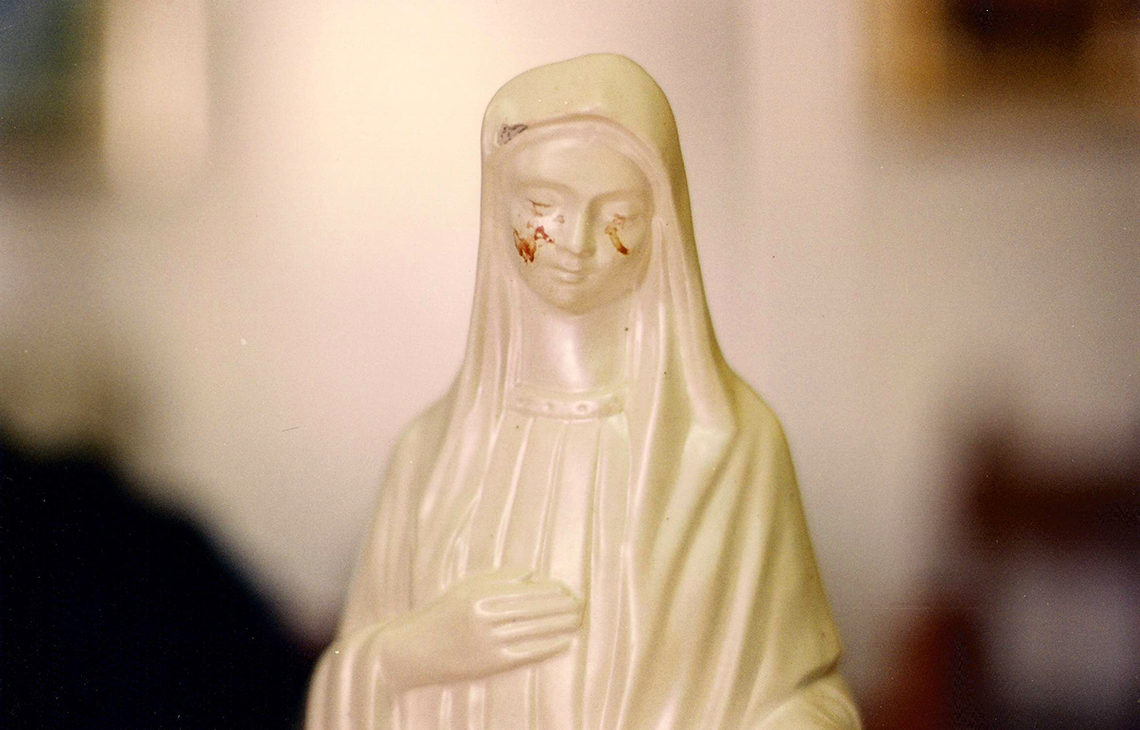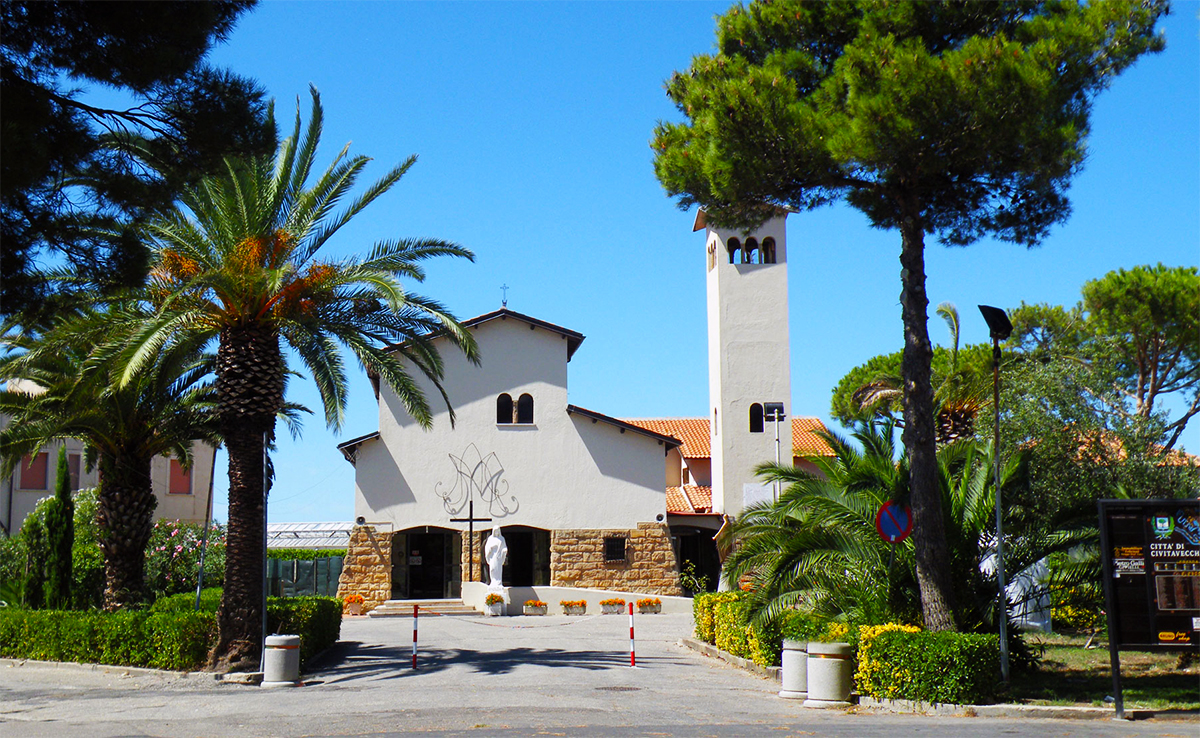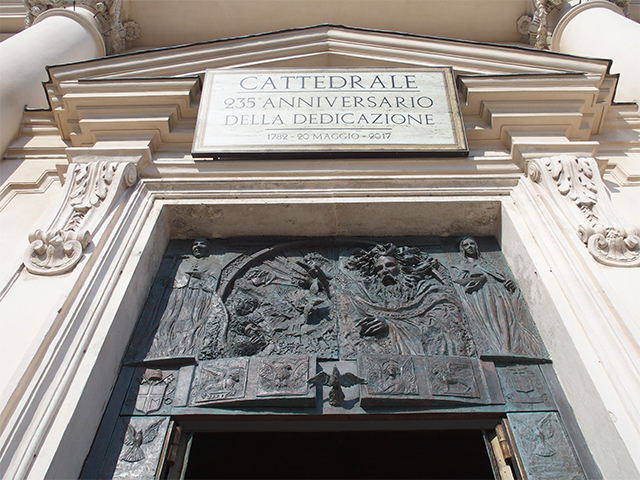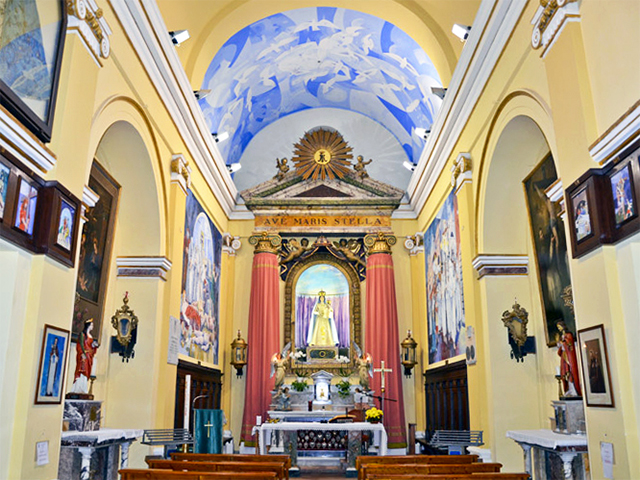The Madonna of Civitavecchia
The Sanctuary of the Madonna delle Lacrime in Civitavecchia: directions, history, messages and scientific examinations about a phenomenon still surrounded by misterySome 7 kilometers north to Civitavecchia, rises the Sanctuary of the Madonna of Pantano, where an armored shrine contains the small plaster figure of the Virgin of Medjugorie, who is said weeped blood in 2nd February 1995.
Since then, the Catholic Church has not officially spoken about the phenomenon. In the meanwhile, the sanctuary has become a place of prayer and worship for thousands of faithful who get here from every corner of Italy.
THE MADONNINA OF CIVITAVECCHIA: HISTORY
It all began on September 16, 1994, when the then priest of the little church of Sant'Agostino, purchased in a shop in Medjugorie, a plaster figure representing the Holy Mary and he gave it to the Gregori family, who belonged to the parish.
The small statue was placed in a niche of the garden of the house until the afternoon of 2 February, when the phenomenon happened. Young Jessica Gregori, who was five years old at the time, saw a red liquid similar to blood falling from the eyes of the Madonnina. Scared, she ran to warn his father, who in turn called the parish priest Don Pablo to see in person the inexplicable event.
The next evening the fact happened again in front of some witnesses, and proceeded in the following days, while the number of the faithful and the curious increased. Finally on 5 February, the news was also spread by newscasts and it became a national case.

The Madonnina of Civitavecchia
Soon a heated debate broke out over the authenticity of the "miracle", that split in two the public opinion: on the one hand the skeptics, among them was the then Bishop of Civitavecchia Bishop Girolamo Grillo who thought the event was due to human action and on the other hand believers who saw in the phenomenon a godly message.
Some among the present left their sworn testimony in front of the Theological Commission established by then Bishop Girolamo Grillo. Some radiology exams were performed but they did not reveal the presence of any weird gadget inside the statue.
There remained the suspicion that someone had soiled with a brush dipped in blood the statue and that the collective hallucination had done the rest. But on March 15, at 8.05 in the morning, an extraordinary event transformed the Bishop from skeptical into one of the most ardent supporters: the Madonnina, in fact, began suddenly to weep blod in his hands, in the presence of other witnesses.
THE MADONNINA OF CIVITAVECCHIA: SCIENTIFIC EXAMINATIONS
A first radiological analysis, carried out the February 24, 1995 at the Gemelli Hospital, ruled out the presence of contraptions or other faults inside the statue, while the folowwing 28 february the results of the examinations of the liquid removed from the statuette showed that it was male human blood.
The men of the Gregori family refused to submit to a DNA analysis to compare their profile with that of the "blood of the statue" but it must be said that one thing is the compatibility of the blood, an another is its identity. To proceed to the compatibility it could be sufficient even a limited number of polymorphisms, but it would not be enough to prove the belonging to one of the members of the family.

The Madonnina of Civitavecchia and the debate about its authenticity
In fact, in order to proceed to the identity it would have been necessary to identify a large number of elements, which was no longer possible at that moment. The analysis from the Judiciary isolated only five polymorphisms, too few for a scientifically significant comparison.
What's more, the five isolate polymorphisms are common to the vast majority of the population and therefore any comparison would not have been totally reliable.
SKEPTICS OR BELIEVERS?
The Catholic Church has not yet expressed officially their thoughts about the weeping Madonna of Civitavecchia and still the public opinion is strongly divided between skeptics and believers.
Some voices, as confirmed by the Bishop Girolamo Grillo itself, argue that Pope Wojtyla was very devoted to the Madonnina and that more than once he went undercover to Pantano to venerate her.
Other episodes, on the other hand, seem to lead to other conclusions. In a television appearance on 17 February 2005, during the transmission of "Porta a Porta" with Bruno Vespa, Bishop Tarcisio Bertone revealed that a second Vatican theological commission would have expressed temselves with the formula "as far as we know there is no evidence of the supernaturality of the event".
Of course, from here we do not dare to express any opinion about the authenticity of what happened. We leave this kind of analysis to the experts and to each of you the full freedom to believe it or not. The aim of this article is to tell the story of the history of this extraordinary phenomenon and to provide useful information to all those who want to visit the Sanctuary of the Madonna of Pantano.
HOW TO VISIT THE MADONNINA OF CIVITAVECCHIA (PANTANO)
The church of Sant'Agostino is neither a cathedral nor a great monument, but a small country church immersed in the green. In spite of this, every year there are millions of pilgrims and faithful who come up here to pay homage and to venerate the Madonnina and perhaps much of its charm depends just on the simplicity of this place.
WHERE IS THE SANCTUARY?
The church and the sanctuary where the Madonnina is kept are not far from Civitavecchia, in a town called Pantano, just before getting to Bagni di Sant'Agostino. If you don't have a car, we recommend you to take a bus (line E) from Piazza Vittorio Emanuele, in front of the Civitavecchia Cathedral.
For details about the timetables, refer to the box below.

Civitavecchia - Sanctuary of the Madonna of Pantano
Useful information
Sanctuary of the Madonna of Pantano
- HOW TO GET THERE
By caar: to get to the Sanctuary of the Madonna of Pantano, take SS1 Road and continue along Via Ugo Fontanatetta towards Strada di Sant'Agostino until you find directions for Pantano.
By bus: from Piazza Vittorio Emanuele, take line E (which runs every hour at 10, 11, 12, etc). You can buy the ticket (€1) on board. After about 35 minutes get off at the stop of the church of Sant'Agostino del Pantano. For the return, take the same line (which runs every hour at 10.40, 11.40, etc).
Allow a minimum of 2 hours for the visit, including travelling time.
- TIMETABLES
- Every day from 6.15 to 22.00Sunday from 7.00 to 20.00
Holy Mass Times
- from Monday to Friday at 7.30 (except on Thursday) - 10.30 - 17.30- Saturday: at 7.30 - 10.30 - 17.30 (in July and August the 17.30 mass will be at 18.30)- Sunday: at 8.00 - 9.30 - 11.00 - 12.00 - 17.30 (in July and August the 17.30 mass will be at 18.30)Every first Saturday of the month is dedicated to the Madonna - PRICES
Free admission



 PORT MOBILITY CIVITAVECCHIA
PORT MOBILITY CIVITAVECCHIA

















